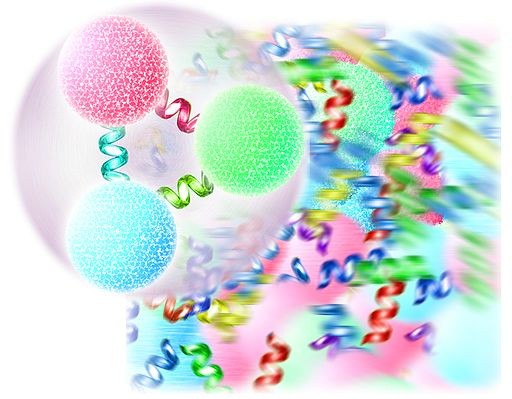
The nature of the universe just got much more mysterious with the evidence of the elusive particle made of pure force.
Glueball According to the Standard Model
In physics, there is the Standard Model which describes the known particles in the universe and the fundamental forces that govern them. Since it was developed in the 1970s, most people incorrectly believed that this theory is known without any open questions regarding its validity. Although the Standard Model has withstood every challenge thrown at it by direct detection experiments, there are still questions that need to be answered.
It is widely accepted that matter is made up of atoms which are composed of protons, electrons, and neutrons. Meanwhile, protons and neutrons are composed of three quarks which are held together by gluons through strong interaction. However, this is not the only possible way to have bound states of matter.
According to quantum chromodynamics (QCD), there should be several ways to create a bound state of quarks, antiquarks, or gluons alone. This can be achieved with baryons, mesons, or exotic states such as tetraquarks, pentaquarks, or hexaquarks.
Another possibility is by having states made of gluons alone without valence quarks or antiquarks. Also known as "glueballs, these quarkless composite particles have never been observed by experts before.
For several decades, particle physicists have theorized the existence of a glueball. Unfortunately, detecting such a particle requires firing protons and antiprotons at each other at immense speeds and then sorting them through the violent aftermath.
Search for the Elusive Particle
Half a century after the first theoretical description of glueball, experts have found a few compelling candidates even if they do not have any real idea what to look for. In a recent study entitled "Determination of Spin-Parity Quantum Numbers of Xð2370Þ as 0 - + from J=ψ → γK0SK0Sη0," a team of physicists has announced that they discovered the most convincing candidate yet.
The exotic particle was detected by scientists who work with the Beijing Electron-Positron Collider II (BEPC-II) in China. They discovered particle X(2370) by exploring a decade of data containing 10 billion samples and looking for a candidate with an average mass of 2,395 MeV/c2, the ideal mass of a glueball.
At first, this seems like an odd prediction considering that gluons have no mass. It turns out, however, that the energy which binds gluons together imparts some mass to the glueball itself.
The particle X(2370) decays from a specific meson called J/ψ, a process which happens almost instantaneously that scientists need to work backward using advanced mathematics. According to the researchers, the radiative decay of J/ψ meson is a process rich in gluon, so it is considered as an ideal spot to search and study glueballs.
This is not the first hint of a glueball that has ever been discovered. In 2015, experts from the Vienna University of Technology published the paper "Nonchiral Enhancement of Scalar Glueball Decay in the Witten-Sakai-Sugimoto Model," which focused on another compelling candidate called meson f0(1710). Although this particle decayed into strange quarks, this study confirmed that a glueball can behave similarly even if its status has not been confirmed.
In the end, the existence of particles such as X(2370) and f0(1710) confirmed the concepts of the Standard Model and QCD theories. Such concepts suggest that a particle made up entirely of the strong nuclear force can actually exist.
Check out more news and information on Quarks in Science Times.
© 2025 ScienceTimes.com All rights reserved. Do not reproduce without permission. The window to the world of Science Times.











